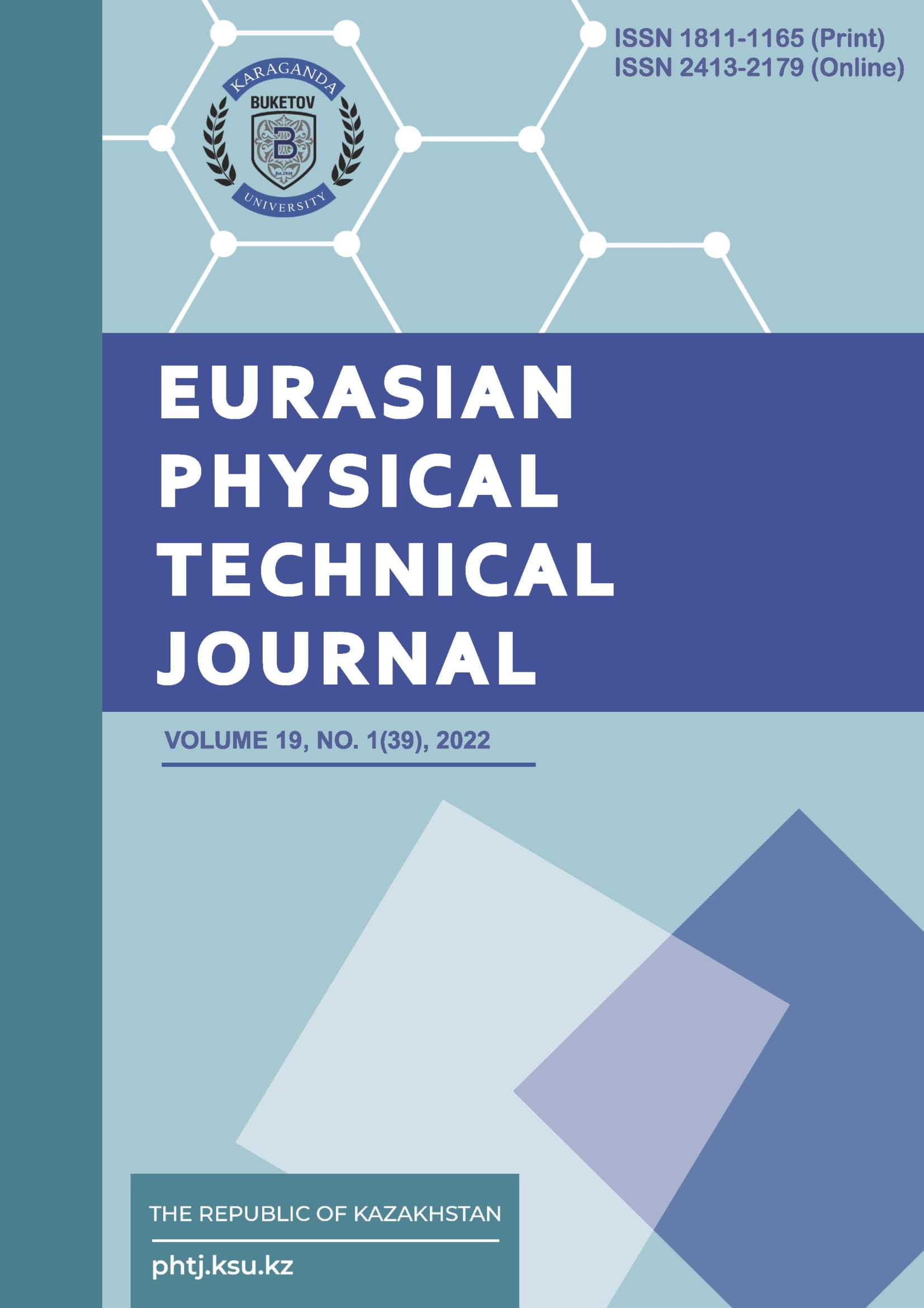IMPACT OF THE ANNEALING TEMPERATURE OF IN2O3 FILMS ON THE PHOTOVOLTAIC CHARACTERISTICS OF A POLYMER SOLAR CELLS
DOI:
https://doi.org/10.31489/2022No1/34-39Keywords:
In2O3, polymer solar cell, voltage characteristics, impedance spectra.Abstract
It is necessary to determine the effect of thermal annealing on morphology, absorption, and photoelectric properties for increase the efficiency of electronic transport of In2O3 films. The paper presents the results of a study the effect of the annealing temperature of In2O3 films obtained by spin-coating on the optical and photo-electrophysical characteristics of a polymer solar cell. It is established that an increase in the annealing temperature of films leads to an increase in the absorption and optical width of the band gap of the film. Has been determined the optimal annealing temperature of the films T = 300°C, at which the electrons in the photoactive layer has the maximum lifetime of charge carriers and a low probability of recombination. At this temperature is observed, the maximum value of the efficiency of polymer solar cell.
References
"1 Huang W., Zhu B., Chang Sh.Y., et al. High Mobility Indium Oxide Electron Transport Layer for an Efficient Charge Extraction and Optimized Nanomorphology in Organic Photovoltaics. Nano Letters, 2018, Vol.18(9), pp. 5805–5811.
Stankiewicz J., Torrelles X. Structural and electrical properties of indium oxide thin films grown by pulsed laser deposition in oxygen ambient. J. Alloy. Compd., 2017, Vol. 694, pp. 1280 – 1286.
Binas V., Kortidis I. Ageing resistant indium oxide ozone sensing films. Sens. Lett., 2016, Vol. 14, pp. 563–566. https://doi.org/10.1166/sl.2016.3665
Attaf A., Bouhdjer A. On tuning the preferential crystalline orientation of spray pyrolysis deposited indium oxide thin films. Thin Solid Films, 2017, Vol. 625, pp. 177–179. https://doi.org/10.1016/j.tsf.2017.01.055
Bouhdjer A., Attaf A. Influence of annealing temperature on In2O3 properties grown by an ultrasonic spray CVD process. Optik, 2016, Vol. 127, pp. 6329–6333. https://doi.org/10.1016/j.ijleo.2016.04.100
Bouhdjer A., Saidi H. Structural, morphological, optical, and electrical properties of In2O3 nanostructured thin films. Optik, 2016, Vol. 127, pp. 7319–7325. http://doi.org/10.1016/j.ijleo.2016.05.035
Ilican S., Caglar M., Caglar Y. Structural, morphological and optical properties of indium oxide film by sol gel spin coating. J. Mater. Electron. Dev., 2016, Vol 1, pp. 19 – 23.
Yuan Z., Zhu X., Wang X., Cai X., Zhang B., Qiu D. Annealing effects of In2O3 thin films on electrical properties and application in thin film transistors. Thin Solid Films, 2011, Vol. 519(10), pp. 3254–3258.
Gan J., Lu X. Oxygen vacancies promoting photoelectrochemical performance of In2O3 nanocubes. Sci. Rep. 2012, Vol. 3, pp. 1021. https://doi.org/10.1038/srep01021
Farrag A.A., Balboul M.R. Nano ZnO thin films synthesis by sol–gel spin coating method as a transparent layer for solar cell applications. J. Sol-Gel Sci. Technol., 2017, Vol. 82, pp. 269–279.
Ismail R.A. Preparation of colloidal In2O3 nanoparticles using nanosecond laser ablation in water. Micro & Nano Letters, 2011, Vol. 6, pp. 951–954. https://doi.org/10.1049/mnl.2011.0459
Yahiaa A., Attafa A. Structural, optical, morphological and electrical properties of indium oxide thin films prepared by sol gel spin coating process. Surfaces and Interfaces, 2019, Vol. 14, pp. 158–165. "













